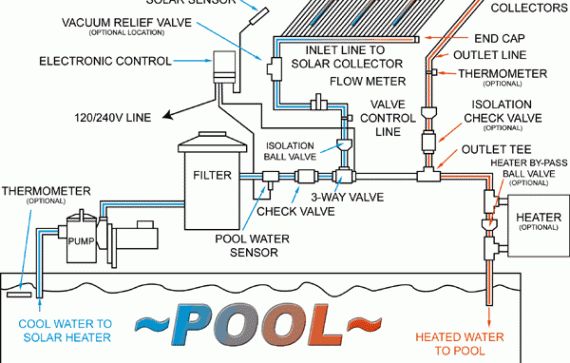Where To Install Pool Check Valve

Where to install pool check valve
Common check valve types included in a foot valve are in-line spring assisted or an in-line ball check valve. They are typically installed at the end of a pump suction line of a water well, fuel tank, or any other application where the suction line is situated below the pump.
When should I use my pool check valve?
Check valves can be used to avoid gravity draining of water in the filter, pump, and pipes when a pool's pump shuts off. They also keep raised spas, fountains, or solar heaters full of water when their own pumps shut off. Specifically, you can use pool check valves for different purposes.
What does a check valve on a pool do?
So how the check valve works why the pool is running the water pressure will push this flap up and
Where should check valves be fitted?
A single check valve is recommended as an ideal solution. The valve must be installed to the cold supply as close to the tap as possible.
How far should a check valve be from a pump?
In submersible pump applications, the first check valve should be installed directly on the discharge head of the pump or maximum one pipe length (20 feet) above pump.
How are pool valves positioned?
Also if your pool has a spa bat valve should generally be set at a 45 degree angle to give just
How long do pool check valves last?
Pool valves tend to last between 5-7 years before the exterior plastic parts need to be replaced. As long as the internal parts are working handles can be replaced. If the valves are older than 10 years you may want to replace the whole thing versus replacing just handles.
Do you need check valve before chlorinator?
To prevent water from backing up thru the system after the pump is shut off, a check valve must be installed just before the chlorination device - on the side going to your filter of heater.
Does my pool need a backflow preventer?
Plumbing code requires annual testing of the PVB by a certified backflow inspector. Underground swimming pools also require a testable backflow preventer (PVB).
Do I need a check valve?
Check valves are necessary if there is a risk of condensate backflow. For example, when a trap discharges into a common condensate collection line, there is the potential risk of backflow from condensate discharged from other traps, so as a rule a check valve should be installed.
Do check valves restrict flow?
Check valves are fluid control devices that restrict the flow of media in a piping system to one direction.
Does a check valve go before or after a valve?
In order to facilitate repair and prevent the shutdown of the whole system due to the failure of the check valve, the check valve will be installed before the outlet gate valve or butterfly valve.
Where would you use a single check valve?
A single check valve can be used for fluid category 2 protection, where there may be an aesthetic change such as temperature, taste or odour. A double check valve is used for fluid category 3 protection, where there is a risk of substances of low toxicity such as common disinfectants.
Is a check valve the same as a backflow preventer?
Check valves use a hinged plug that allows water to pass through the pipeline but blocks it from coming back. Backflow preventers, on the other hand, apply an increased amount of pressure on a pipe to ensure the water can only flow one way.
How many check valves do I need?
More than one check valve should always be used in submersible pump installations. If the pump does not have a built-in check valve, a line check valve should be installed in the discharge pipe within 25 feet of the pump and below the drawdown level of the water in the well.
Which comes first gate valve or check valve?
“Generally, both a check valve and a gate valve are installed in the discharge line. The check valve is placed between the pump and the gate valve and protects the pump against reverse flow in the event of unexpected driver failure.”
Why is a check valve installed on the discharge side of a pump?
A check valve will be used commonly on the discharge of the pump to prevent backflow from the downstream system, when the pump shuts off. Check valves are also used to prevent contaminated media in branches from flowing back into the main trunk line.
What are the three valves on a pool pump?
And the next type of valve is called a three-way valve it's very similar to a two-way valve. Only
Where should pool pump be positioned?
Try to keep the equipment at the level of the pool or lower. Placing the filter system above the water level in the pool puts more strain on the pool pump. Inground pool pumps are built to handle minor lifts of two or three feet, and high head pumps that have much more capacity are available if required.
How do I increase circulation in my pool?
Improving Pool Circulation
- To ensure proper circulation, you need to switch on the pump for at least 8 hours a day.
- Make sure you size the pump, i.e: get a pump according to your pool volume. ...
- Just as you clean the pool, you also need to clean the pump and the filtration system. ...
- Your pool may have a cartridge filter.








Post a Comment for "Where To Install Pool Check Valve"